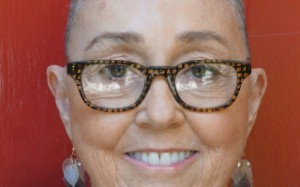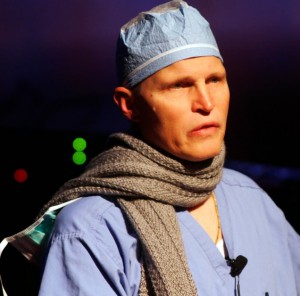
It’s TIME! Today is the first day of the “leading patient-centered conference on emerging technology andmedicine” the 2014 Stanford Medicine X Conference. For four days, patients, business leaders in new technology, health care professionals mingle, share, explore and learn from each other in amazing surroundings. It’s Silicon Valley held at the Stanford University School of Medicine.
There are loads of pre-conference sessions happening today but for the patient community, the conference begins Friday. For those of you who are not familiar, this is a conference that actively invites patients to share their stories. Actually, it provides “e-patients” opportunities and financial help to go to the conference. Here is their definition of ePatient scholar:
ePatient scholar (e·pa·tient schol·ar, /e‘pāSHənt ’skälər/): 1. A specialist and expert who is highly educated in his or her own medical conditions and who uses information technologies (e.g., Internet tools, social networks, self-tracking tools) in managing their health, learning from and teaching others. 2. (Stanford Medicine X ePatient scholar) An educator and role model for other patients and health care stakeholders.
The application process for these scholarships starts in late November and ends in early January. There are three tracks to apply to: an engagement and producer track, a presenter track and a design track. Those in the engagement/producer track attend and share their experiences via social media. Presenters actually create a 5 minute presentation in what they call the “pecha kucha/ignite format”–a fast paced concise format, 20 slides for 20 seconds each. The design track allows the epatient to actually work with a design team to create a solution to a problem they have identified: all in one day.
There will be many amazing speeches, presentations, workshops and master classes.
One epatient speaker is Laurie Becklund. Laurie is a former reporter for the Los Angeles Times and she will  be speaking to the physicians and researchers about being a metastatic breast cancer patient. As her profile states
be speaking to the physicians and researchers about being a metastatic breast cancer patient. As her profile states
“Thousands of other women nationwide and millions worldwide have remained in the closet out of fear of losing jobs, insurance, boyfriends, or just living a normal life. Others have been asked to leave support groups to avoid depressing the “survivors.” An estimated 3-6% of breast cancer research dollars goes to metastatic research, though metastatic breast cancer is the only kind of kills.” Her presentation will be a challenge to these thinkers and leaders to
“1)the need to redefine Komen’s 30-year-old”early detection for the cure” marketing to reflect new mammogram studies and other research, and 2) to recognize that gold standard trials will not save our life, nor perhaps even my daughter’s, but that we have alternatives through ground-up databases.”
Amy Gleason is a nurse whose background has enabled her to be the all-important caregiver and advocate for her daughter who has a rare autoimmune disorder. Morgan, her daughter, was featured on our blog during one of her many stays at the hospital. Her presentation will focus on the barriers that patients have to being the engaged participants in their care.
 Dr. Joseph Salisz is a physician turned patient turned problem solver. In 2010 at the age of 51, Dr. Salisz was diagnosed with aggressive prostate cancer with bladder involvement. His surgery included a urostomy, which is basically removal of the bladder. He was thrown into the world of ostomates. Over 100,000 ostomies are performed in the US each year on people with severe diseases of the colon, ilium and bladder. In the process, they have a “stoma” or “anus” created on their abdomen or side to collect the wastes. Colostomy, ileostomy and urostomy patients deal with leakage, “blow-outs of their bags,” perspiration that can cause infections and breakdowns of their skin. Many people with ostomies drop out of society.
Dr. Joseph Salisz is a physician turned patient turned problem solver. In 2010 at the age of 51, Dr. Salisz was diagnosed with aggressive prostate cancer with bladder involvement. His surgery included a urostomy, which is basically removal of the bladder. He was thrown into the world of ostomates. Over 100,000 ostomies are performed in the US each year on people with severe diseases of the colon, ilium and bladder. In the process, they have a “stoma” or “anus” created on their abdomen or side to collect the wastes. Colostomy, ileostomy and urostomy patients deal with leakage, “blow-outs of their bags,” perspiration that can cause infections and breakdowns of their skin. Many people with ostomies drop out of society.
Dealing with this firsthand motivated Dr. Salisz to invent “StomaCloak.” It is a cover that wicks away perspiration and substantially reduces odors. In the review by ileostomate and colostomate Thalia Skye, “StomaCloak: It does the job.”
The list of speakers goes on. Medivizor is also well represented – as the winner of the Doctors 2.0 & You 2014 Startup contest, Medivizor’s CEO, Tal Givoly, presents a plenary on September 7 at 3:50pm PT about “Personalization when it matters most” (and that is, in our health).
Important Information
The full agenda of the event is here: http://medicinex.stanford.edu/2014-schedule/.
And, you can even attend remotely for free: Sign up to the global access program here: http://medicinex.stanford.edu/2014-global-access-program/.
Follow the twitter stream by following #medx hashtag.
Look for more on this outstanding conference.





